NaI/Osprey® Based System for Real-Time Monitoring of Radioactivity in Pipes
Real-time in-line monitoring of radioactive liquids and slurries in pipes
The processing and management of radioactive materials often requires real-time in-line monitoring of radioactive liquids and slurries in pipes. Process monitoring is an essential part of manufacturing operations, material accountability, and criticality safety. Many applications require simultaneous measurements of more than one radionuclide, a need that is met using broad-energy gamma detectors paired with multi-channel analyzers. Outputs can be configured to control downstream processes.
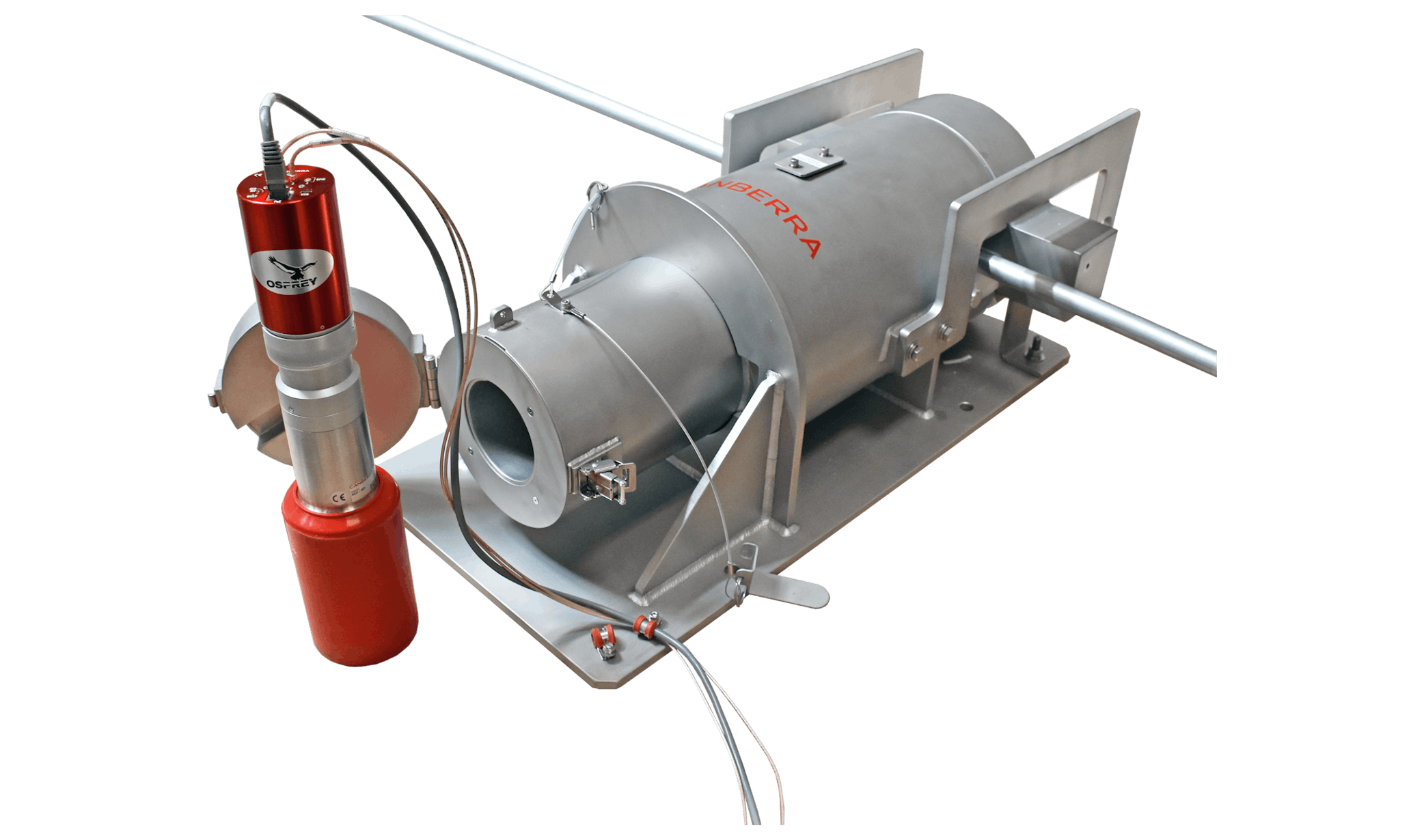
System Features
- Uses off-the-shelf components – systems can be customized and delivered quickly and economically
- Portable and compact – system can be moved around a facility as needed
- Continuous (24/7) operation – minimal downtime
- Relay output for immediate material control/diversion
- Generates audio/visual alarms
- Monitors multiple radionuclides simultaneously – wide range of gamma energies monitored
- Temperature-stabilized detector
- Real-time monitoring of detector performance
- Calibrated for activity concentration
- 100% Data logging
- Not dependent on laptop computer
How It Works
The Process Radiation Monitor, shown schematically below, monitors the gamma activity in the process pipe in near real time using an appropriate gamma detector. Two separate ratemeters monitor two segments of the gamma spectrum. The current output of Ratemeter #1 drives a diversion valve when the readout, calibrated in uCi/L, exceeds a specified limit.
Ratemeter #2 monitors the performance of the detector in real time and generates an immediate fault should the detector fail. The Canberra™ Data Analyst is an autonomous spectroscopic collection instrument, continuously acquiring data, identifying nuclides, and storing the results internally.
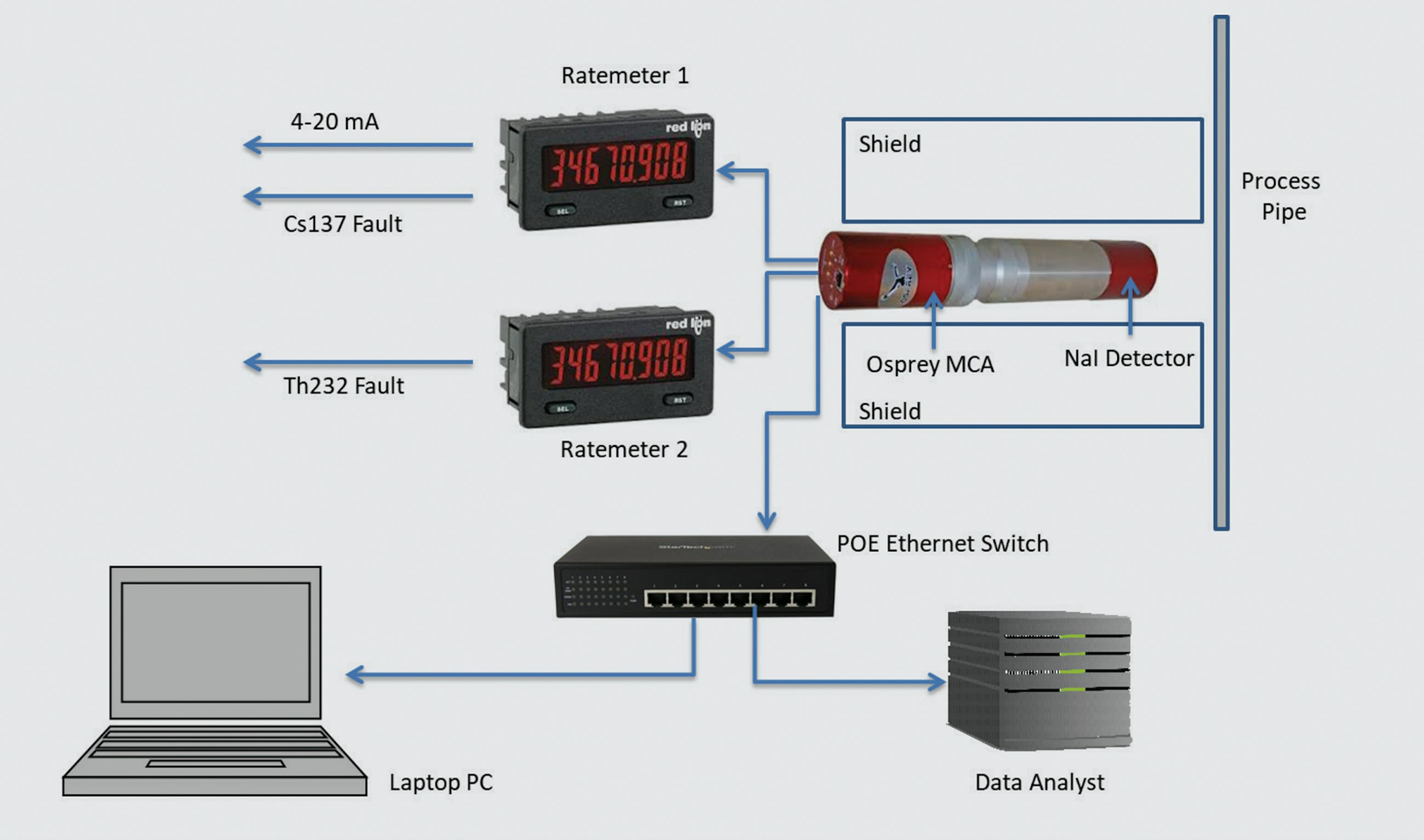
Advantages of Continuous Gamma Spectroscopy
- Eliminates expensive and hazardous material sampling.
- Immediate results, no waiting for sample analyses.
- Grab samples only measure at a single point in time.
- Mixed radionuclide dose rates can be calculated and reported in real time.
- Flexible analysis workflows can be changed as plant processes change.
- Independent autonomous 24/7 operation.
- Unattended operation reduces personnel exposures to radiological and other hazards.
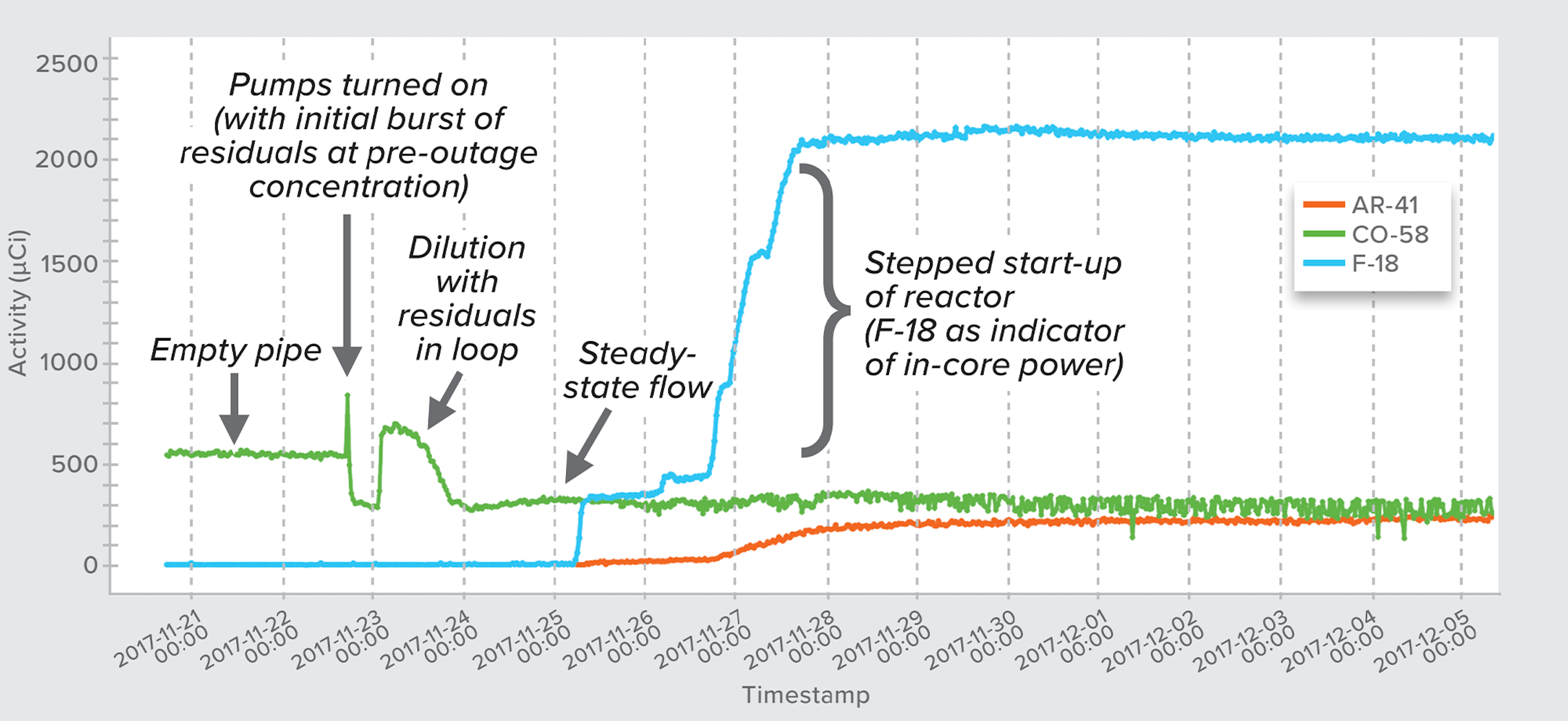
How It Works
- Medium resolution Gamma Detector: IPRON-1 1"x1" NaI, IPROS-2 2"x2" NaI, IPROS-3 3"x3" NaI, or IRPOL-1 1.5" x 1.5" LaBr
- Osprey Multi-channel Analyzer (MCA) Tube Base
- ISOCS™ modeling to generate efficiency calibrations.
- Data Analyst
- Laptop Computer (optional)

NaI(Tl) or LaBr3(Ce) Gamma Detector
One of several different scintillation detectors may be selected depending on the application requirements. For example, the Model NAIS-2x2™ Sodium Iodide Scintillation Detector is a high-efficiency scintillation detector featuring a 2 x 2 in. NaI(Tl) crystal in an aluminum housing. This detector includes a photomultiplier tube, a high-voltage power supply (HVPS), stabilization electronics, preamplifier, and an 8-pin Mirion proprietary connector. Mirion NaI(Tl) detectors have a proven record of long-term reliability and stability.
The NAIS-2x2 NaI(Tl) detector is LED temperature stabilized. The stabilized probe continuously monitors and adjusts the gain of the detector to ensure consistent performance throughout the entire temperature operating range. The consistent performance allows users to perform nuclear identification and quantification under all typical indoor and outdoor conditions while maintaining the highest confidence in the data generated by the instrument.
The detector comes with a generic mathematical efficiency characterization for intrinsic detector efficiency. Counting efficiency calibrations for any source/detector geometry can be generated using the Mirion ISOCS/LabSOCS™ mathematical efficiency calibration software. This completely eliminates the need for source-based efficiency calibration measurements.
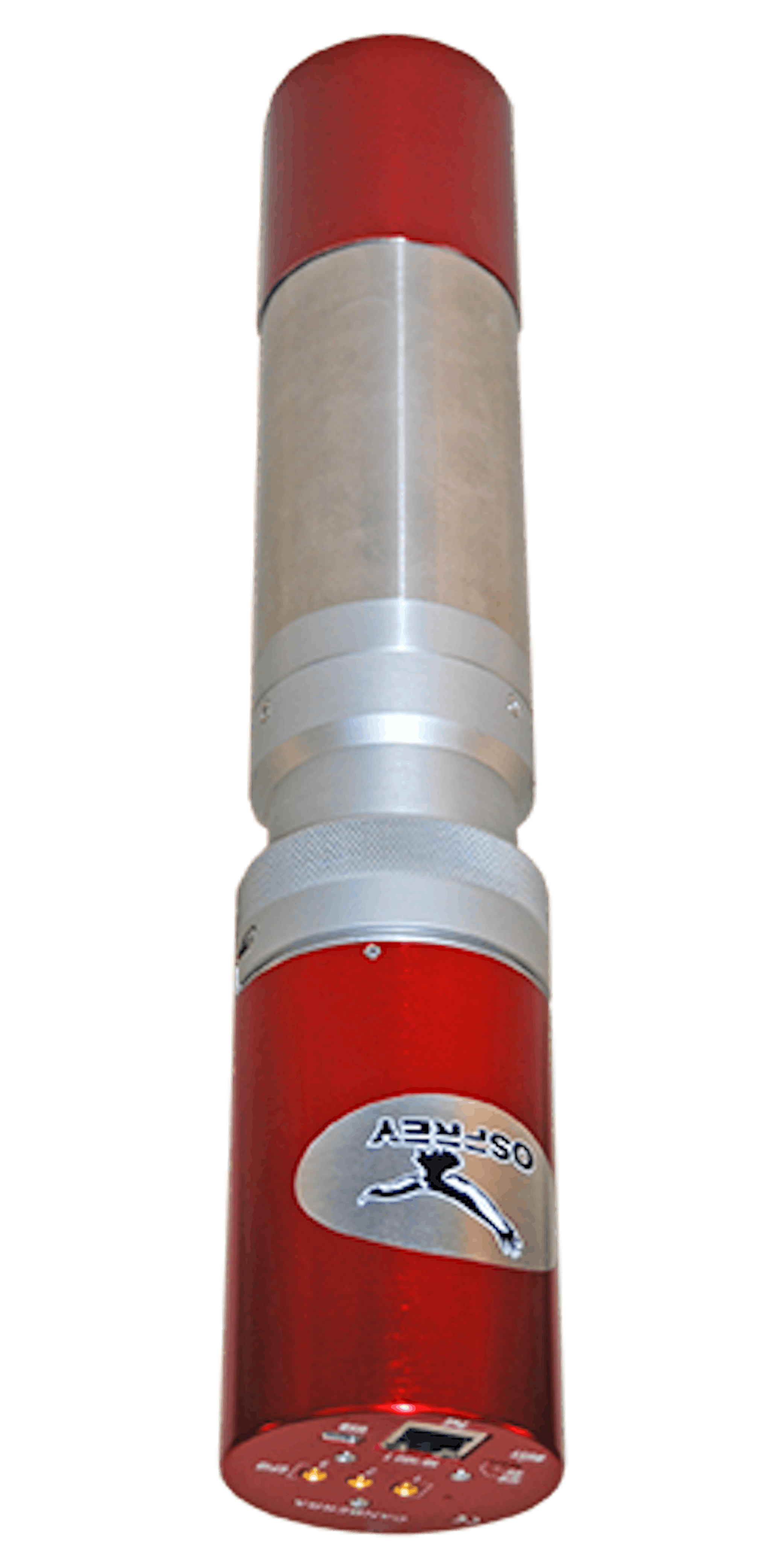
Osprey Digital MCA Tube Base
The Osprey unit is a fully integrated multi-channel analyzer (MCA) tube base. It can be controlled and powered using a single USB or Ethernet cable. The Osprey unit supports all commonly used spectrometry modes – PHA, MCS, SCA, MSS, List, and Timestamped List. It has three General Purpose Input/Output (GPIO) outputs that may be independently programmed.
The Genie™ 2000 software suite is a comprehensive environment for MCA control, data acquisition, display, and analysis. It provides independent support for multiple detectors, extensive networking capabilities, advanced data analysis, and comprehensive batch procedure capabilities.
In addition, a diagnostic web graphical user interface (GUI) application is supplied with the Osprey unit, providing MCA and probe status information, network setup, and firmware upgrade functionalities.
Mirion DA-PRO™ Data Analyst
The Data Analyst (DA) is a data logging device that captures the full gamma spectrum generated by the NaI/Osprey unit once every second and archives all data for future analysis and review. Multiple analyses, called workflows, can be set up to run simultaneously to analyze the spectra with different averaging times, nuclide libraries, and analysis parameters. Full Genie 2000 spectral analysis is supported. Analysis results can be exported in many different formats including CAM, N42, EURDEP, and JSON. Nuclide-specific alarms can be configured.
The unit is very compact, only 13 x 6 x 17 cm. It can be powered remotely via a Power over Ethernet (PoE) supply or internal battery. Once workflows have been configured it will run continuously and autonomously with no computer needed. Wi-Fi, Ethernet, and USB communications are supported.
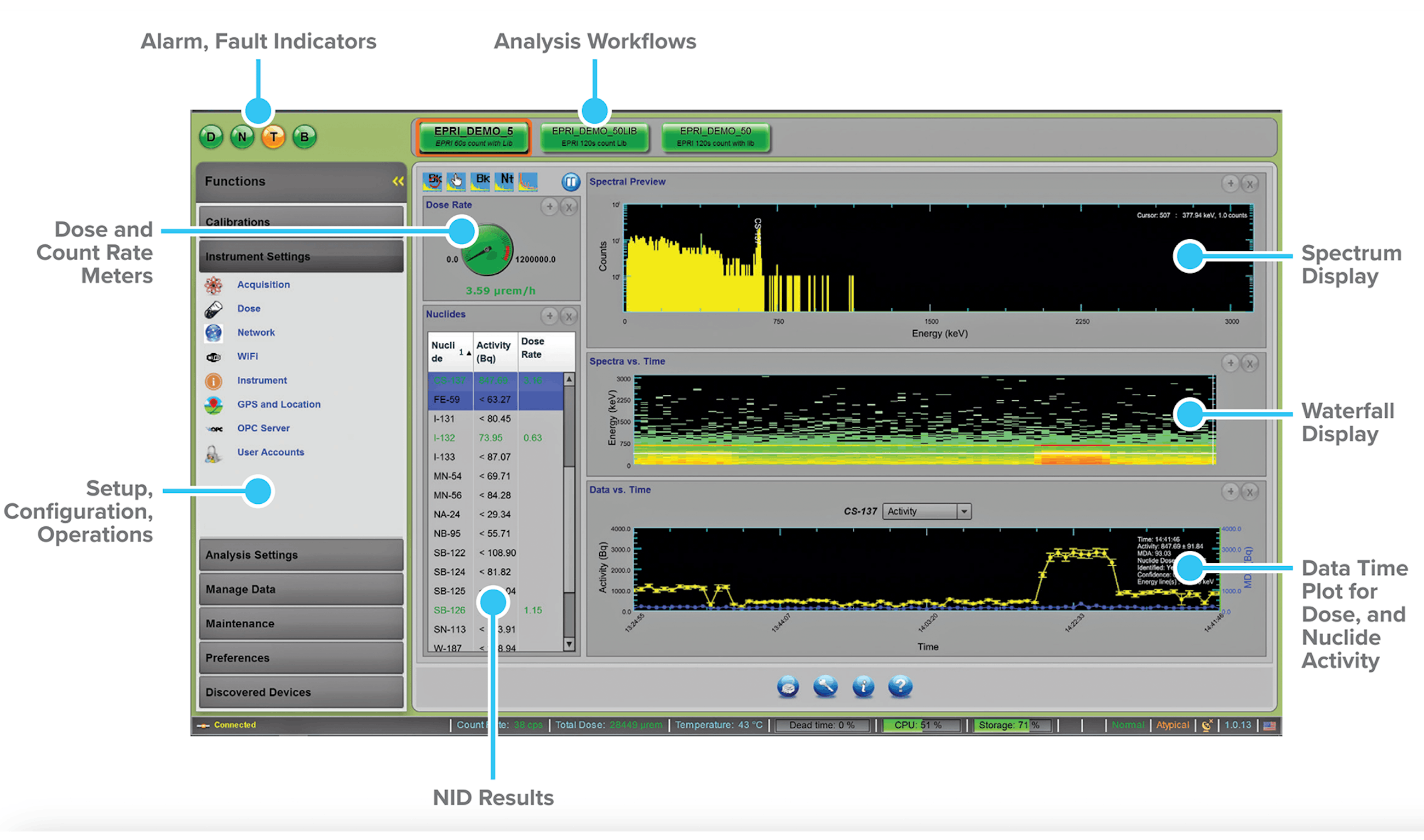
Highly Flexible Design
The pipe monitor system is extremely customizable and flexible depending on the customer’s particular needs. Some of the specific elements that can be selected and configured include:
- Detectors: Mirion offers a wide variety of gamma detectors that can be integrated into the system, including NaI, LaBr, CeBr, CsI, CZT, and HPGe detectors.
- Multiple detectors can be incorporated into a single system.
- Multi-channel Analyzer: Osprey unit for standard applications or Lynx® Digital Signal Analyzer for high count-rate and/or high-resolution applications
- Gamma spectroscopy software: Genie or Apex-Gamma™ software
- Data Analyst: Multiple analyses (workflows) can be set up to monitor and report count rates, dose rates, and activities with various integration times, perform nuclide identification (NID) functions, monitor gamma backgrounds, and generate alarm and fault signals to external equipment.
- Shielding can be designed and fabricated for specific scenarios and geometries.
- Mirion’s Eco-Gamma™ Environmental Gamma Radiation Monitor can be used to monitor changing dose rates in the measurement area and modify the data processing parameters accordingly.